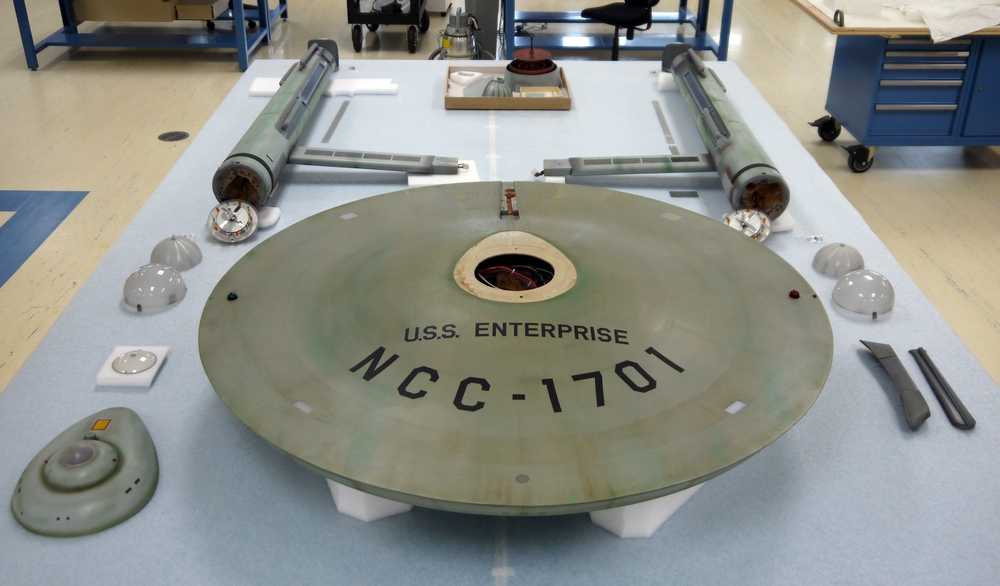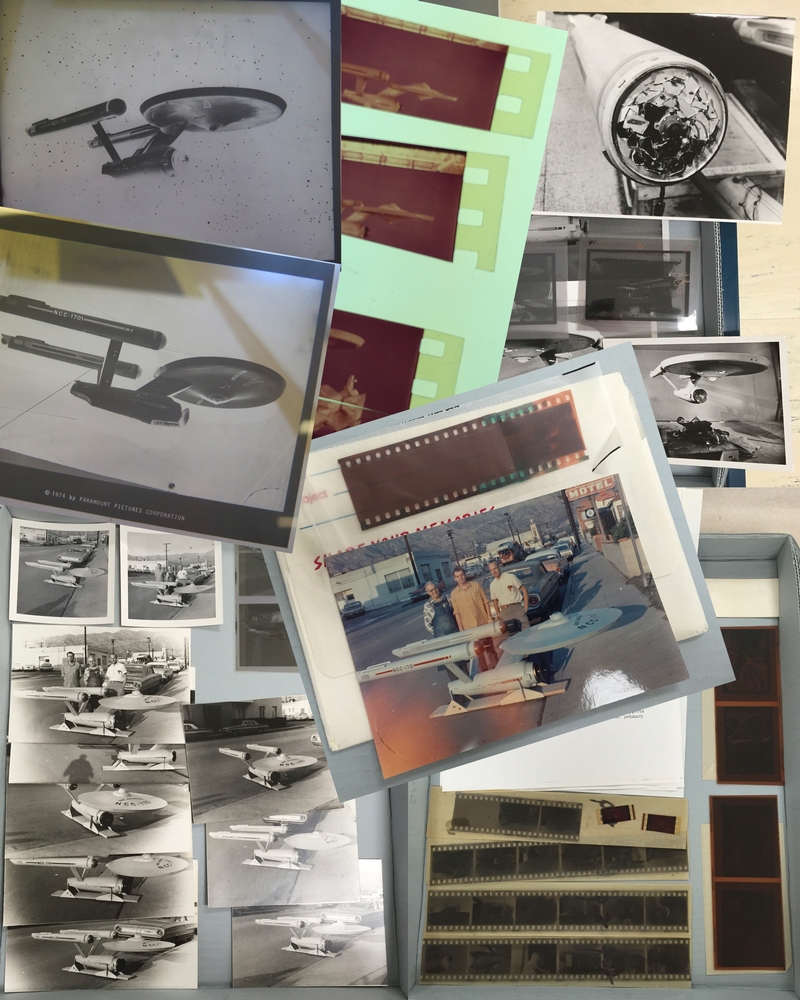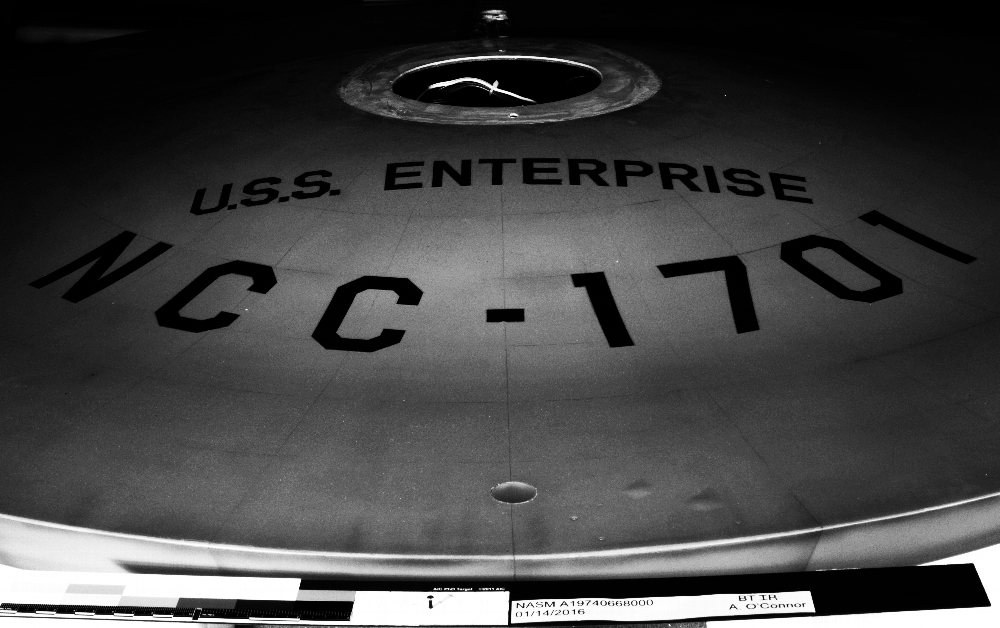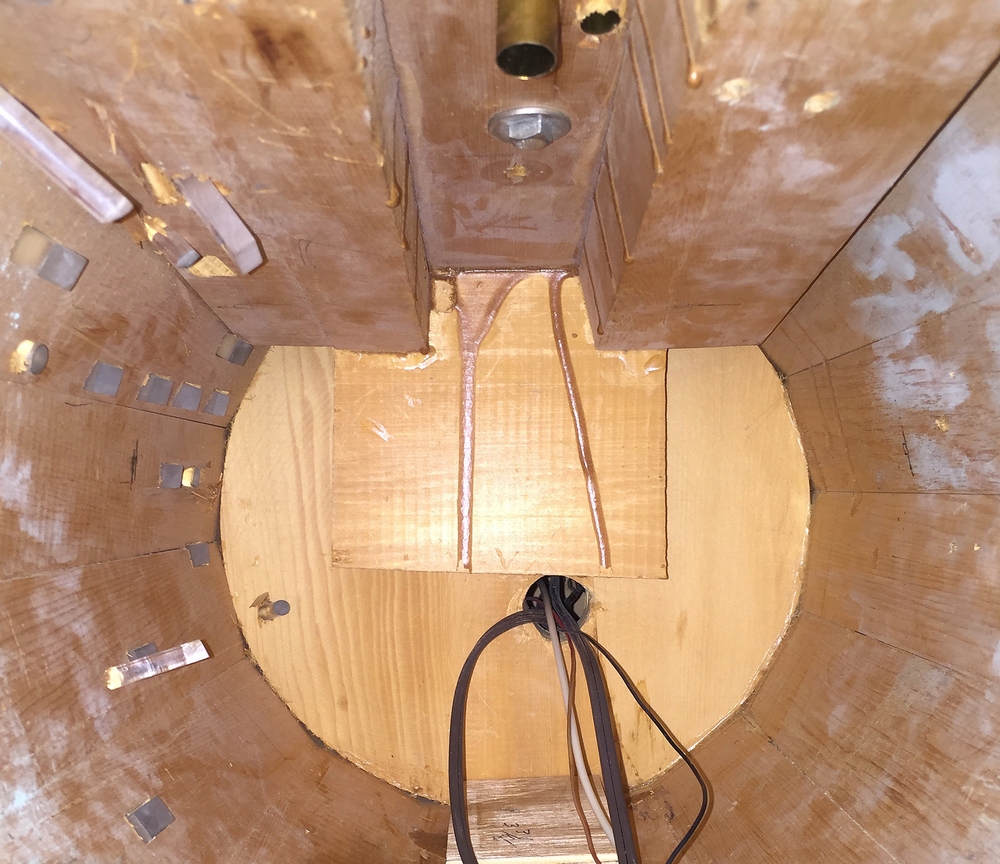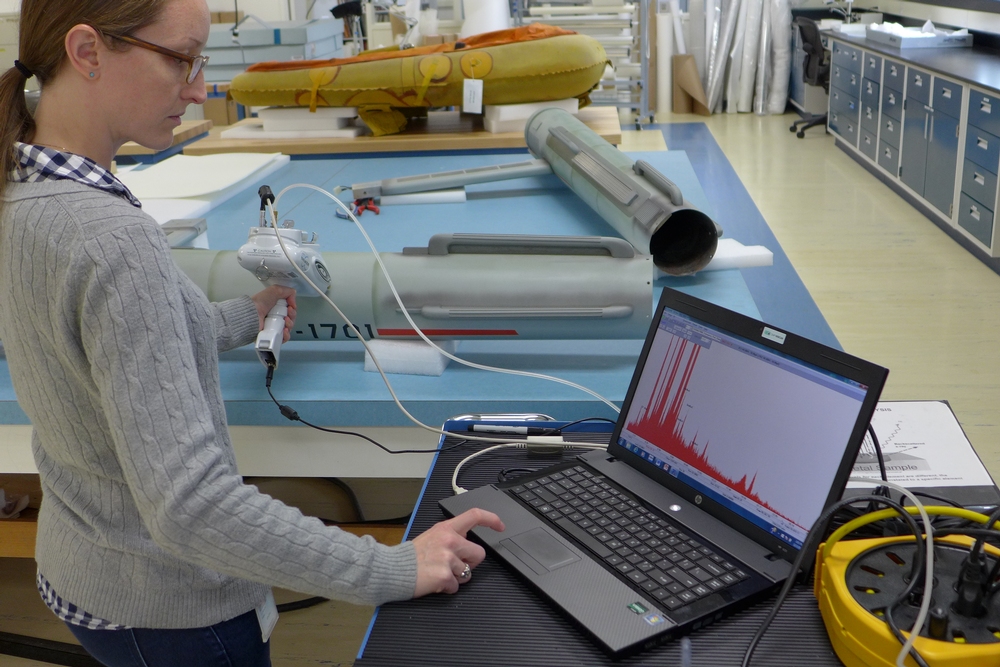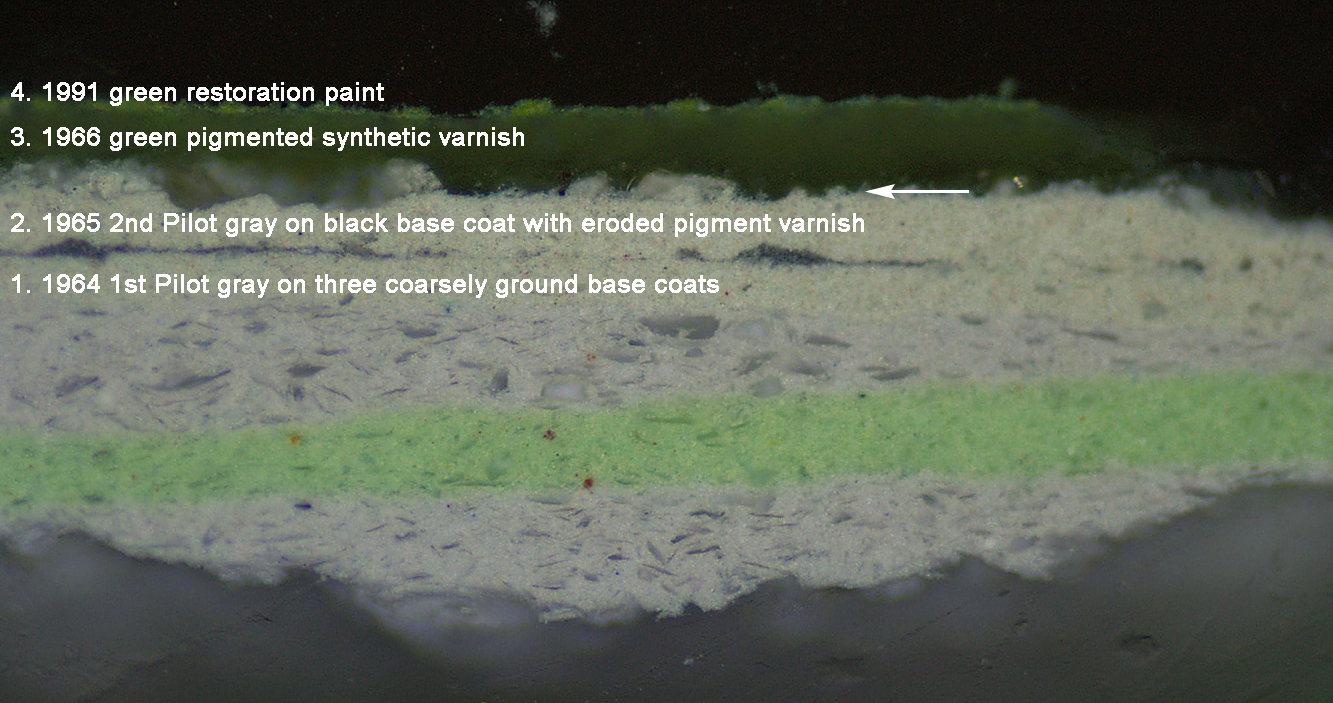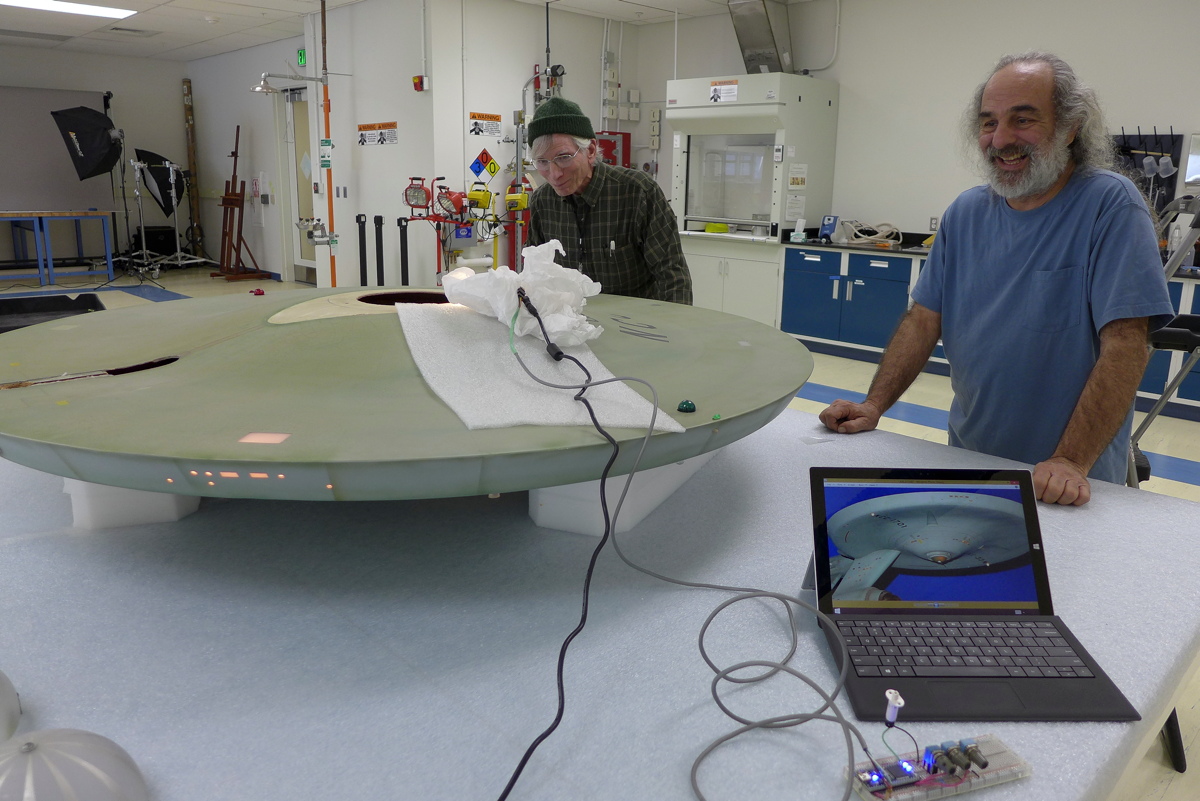The Restoration of Star Trek's USS Enterprise in Pictures
Live long and prosper
To do the best job possible at restoration, specialists carefully disassembled the U.S.S. Enterprise into its various parts – saucer section, secondary hull, port and starboard nacelles (engine casings) and pylons (pillar-like support structures), deflector dish array, hangar bay doors and the bridge.
You will always be my friend
A collection of Trek fan photos of Enterprise over the years, which were used to inform the museum's restoration of the model.
Boldly shining in infrared
This image of the Enterprise in infrared shows off pencil marks that were put there during the Original Series run.
Admiral, there be glue here!
Aging, yellowing glue is visible inside of the model Enterprise. In some cases, glue is all that supports the interior, so the museum will support the structure using metal.
Interior 'wessel'
This shows the interior of the vessel's secondary hull, looking aft towards the hangar bay. ('Wessel' is a reference to a famous mispronunciation of the word "vessel" in Star Trek IV: The Voyage Home.)
Hailing frequencies open
Using what looks like a communicator – but is actually an X-ray fluorescence spectrometer – museum conservator Ariel O'Connor looks at the metal alloy used for the Enterprise's port engine casing.
Set painting to gray
Layers of paint cover much of the Enterprise from years of filming. These layers will be treated with a base color that will exactly match the original gray, which is preserved in a couple of small sections of the ship.
Breaking space news, the latest updates on rocket launches, skywatching events and more!
Enterprise in drydock
Museum specialist David Wilson searches for the exact color match of the "Star Trek" starship Enterprise studio model. The museum discovered the model's original grey paint was under the bolt cover of the model's saucer.
Activate lights, mister!
Museum specialists Zabih Sadighian (right) and Larry Berger proceed with initial testing of LED lighting strips hidden inside the "Star Trek" starship Enterprise studio model. They attempt to match the color temperature of the LEDs to photographs of the model from the 1960s. The system uses flexible RGB LED NeoPixel strips that the specialists can adjust and program remotely, allowing them to control the intensity, color temperature, and blink pattern to duplicate the original visual effects seen in the series.

Elizabeth Howell (she/her), Ph.D., was a staff writer in the spaceflight channel between 2022 and 2024 specializing in Canadian space news. She was contributing writer for Space.com for 10 years from 2012 to 2024. Elizabeth's reporting includes multiple exclusives with the White House, leading world coverage about a lost-and-found space tomato on the International Space Station, witnessing five human spaceflight launches on two continents, flying parabolic, working inside a spacesuit, and participating in a simulated Mars mission. Her latest book, "Why Am I Taller?" (ECW Press, 2022) is co-written with astronaut Dave Williams.
